


We produced this video a while back (2000), but it is still a well-done, professionally filmed introductory video on restorative practices in schools (filmed in Colorado & Minnesota). The video highlights different program models, including conferencing, circles, and a student-run program. This, too, is an excellent video for showing staff an overview of what restorative practices are all about. Originally produced by the Colorado School Mediation Project, which has evolved into Restorative Solutions!

An excellent introductory video on restorative practices in schools (based in Sonoma County California) using current statistics on suspensions, interviews with school staff, students, parents, community volunteers, and a school resource officer. Excellent for showing staff an overview of what restorative practices are all about. (Secondary Schools)

From the Office of Social & Emotional Learning at Chicago Public Schools comes this short but powerful overview video of restorative practices in schools. It shows how hard CPS is trying to create a culture of belonging and enforce discipline in a whole new way. (Secondary Schools)

Students from MetWest High School (Oakland Unified School District) facilitate, participate in and reflect on a Circle in the classroom to build community and relationships. This video highlights the process and elements of a community-building Circle.

At Glenview Elementary School, dialogue circles are part of a program aimed at building collaboration, respect, and positive behavior among students.

A short introduction to the how and why of community building circles at the secondary level. Highlights a very diverse student body.

This video covers a re-entry Circle to welcome a student back to school following an absence due to incarceration and the process of making a plan to support his education going forward. The Circle takes place at Bunche High School (Oakland Unified School District), and the video is a collaboration between OUSD and Restorative Justice for Oakland Youth.

Yes, it's possible for Kindergarteners to sit through a Circle! This video shows how one teacher does it.
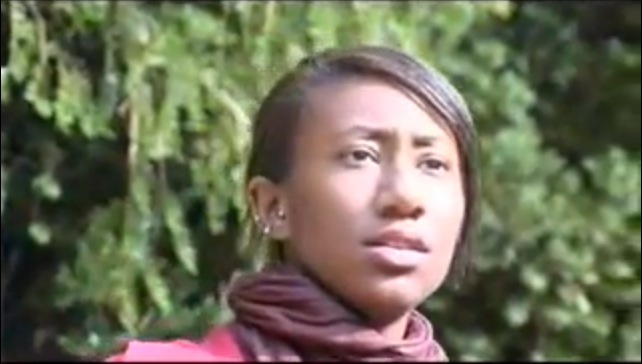
A young girl running from her troubles finds herself in a peacemaking Circle with her friends. This video highlights the foundational elements of a peacemaking Circle and the value of using one.
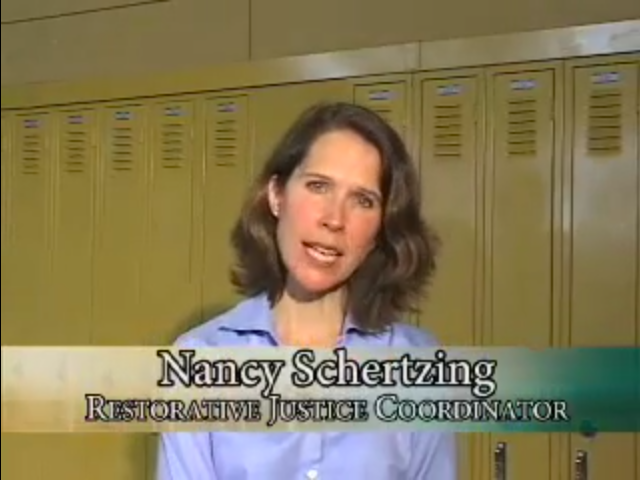
This video features an overview of the main elements of a restorative conference and how the process was used to repair harm after Ryan Lewis, a student from East Lansing, MI, was attacked by his teammates after football practice.

A teacher demonstrates a restorative-based resolution to conflict in a primary school setting. Many subtle but purposeful aspects of the facilitator's approach are highlighted – respectful, effective, and quick!

Teachers Unite New York City provides an overview of what restorative justice in schools is and isn't, as well as an overview of the practices and implementation processes.

Co-principal and teachers from Curley K-8 School in Boston, MA, discuss the process – challenges and successes – of the whole-school implementation of restorative practices and the power of restorative practices to transform school culture.

This video provides an overview of restorative practices used in the East Lansing School District in Michigan. The video features input from school staff and administration as well as reflections from a student and parents who participated in a restorative process to address conflict.

This video from the New Foundland organization, RELATIONSHIPS FIRST, Restorative Justice in Education, provides examples of restorative practices for every member of the school community.

In the summer of 2010, Kids Rethink New Orleans Schools participants began advocating for the implementation of restorative justice in schools as an alternative to suspensions and expulsions.

This video from the International Institute for Restorative Practices includes interviews with staff and students of West Philadelphia High School.
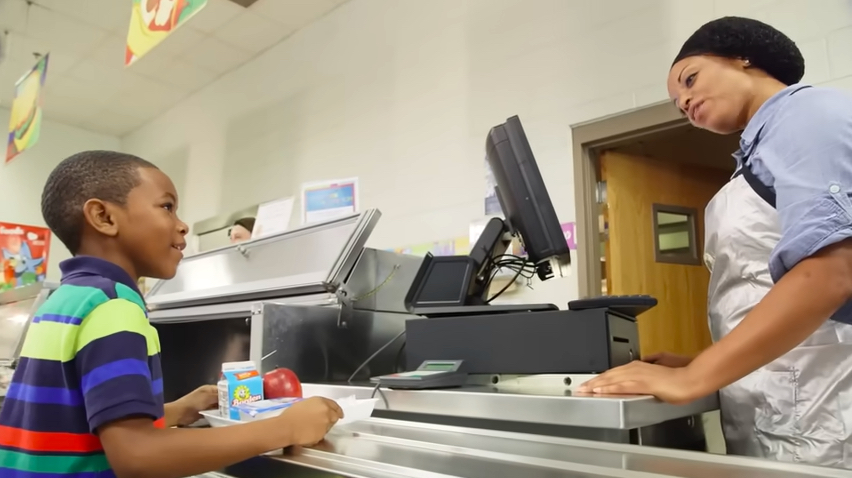
The Atlanta Speech School released a video called Every Opportunity, and the story it depicts elicited a strong reaction from teachers and parents. It follows a little boy throughout his day at school and shows how the adults he encounters, from bus drivers to teachers, interact with him. It focuses on the ways adults can affect a child's education through interactions with them. Although the response is varied, there's no denying the power of its message.
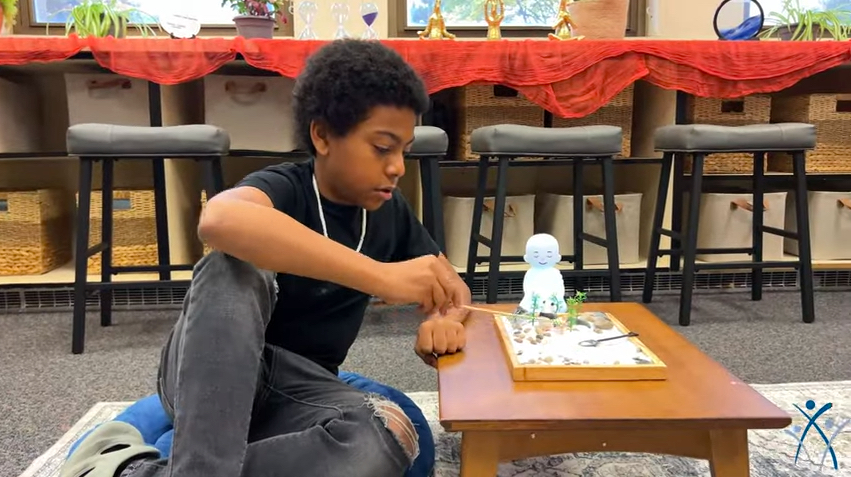
This video shows how one district created Wellness Rooms in each of their middle schools, students are able to visit them during the school day when confronted by stressors. While there, they will learn systems and skills to apply throughout their daily life that will better enable them to independently regulate their own emotions, respond to stress in healthier ways and increase their resiliency moving forward.

Natalie Medina, a teacher in Panama, talks about why teens like the combination of theater and Circles, the importance of the talking piece, and a play young refugees developed out of a Circle conversation.
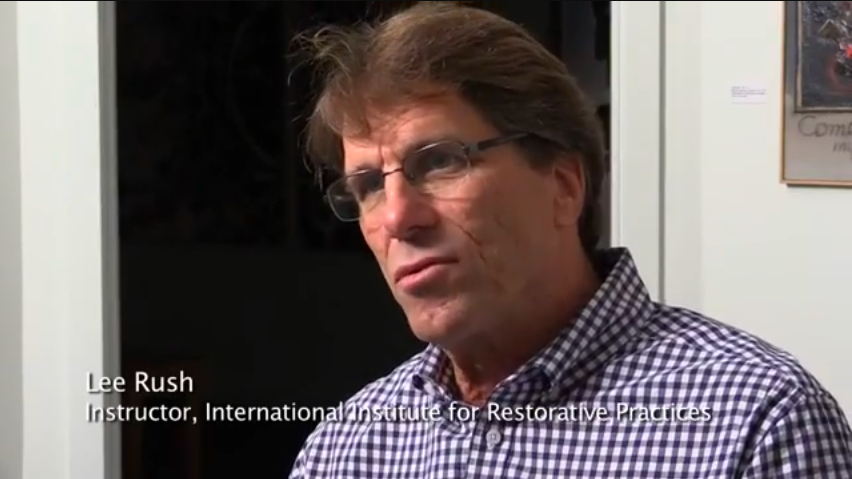
Bullying is a great area of concern, especially in schools. In this video, IIRP Instructor Lee Rush talks about the way restorative practices dovetail with bullying prevention and how to assess, case by case, whether a restorative process is appropriate.

A secondary school principal chooses to use a restorative conference rather than punitive measures to address a case of bullying and describes the process, including preparation, bringing the parties together, and the outcome. (Retrieved from Donegal Mediation Network)

Restorative Justice for Oakland Youth (RJOY) staff and youth discuss restorative justice as a method for interrupting cycles of violence among youth, reducing involvement in the juvenile justice system, suspensions, and expulsions, and promoting school engagement and positive youth development.

A look at the peer jury program implemented by a high school in Peoria, IL, with the intention of reducing the number of youth entering the juvenile justice system from school.

This song is a testament to the challenges many students in our schools are facing, as well as a testament to the fact that the traditional means of responding to students who are struggling in schools are not working.

Adam Voigt from Real Schools in Australia delivers a wonderful webinar on how to run classroom circles. Basic tenets include: 1) They must serve your learning goals; 2) Engagement is everything; 3) Less Really Is More; 4) Position, Position, Position; 5) Make them scheduled and flexible; and 6) The Special Sauce. More than others, he emphasizes using circles for pedagogical reasons and keeping them short and sweet.

Adam Voigt delivers a powerful tutorial on how we can take restorative practices to the next level by integrating 1) Language, 2) Mindset, and 3) Conduct. Language and Conduct create pedagogy; Conduct and Mindset create philosophy; and Mindset and Language create our practical tools.
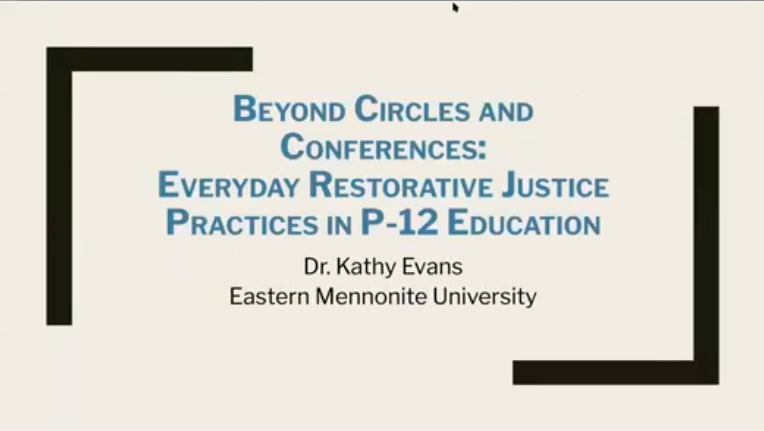
The Zehr Institute hosts free, restorative justice–based webinars open to the public. This webinar explores school-based practices grounded in restorative values and principles that support meaningful shifts in school culture. It offers practical strategies for embedding restorative practices into everyday school life to foster cultures of healing, accountability, and learning. Skip to 8:00 for the interview.

Brave New Films created this animated 3-minute video on RJ. Very nice introduction to the field.

An absolutely beautiful and deeply moving film about RJ in a school community in Austin, TX. "The way we handle discipline in our schools, prison, and even our homes, is like throwing water on smoke. We see the smoke, so we attack smoke, completely ignoring the fire that is completely consuming everything around us. This movie is an attempt to get people to look at the fire rather than just chasing smoke."
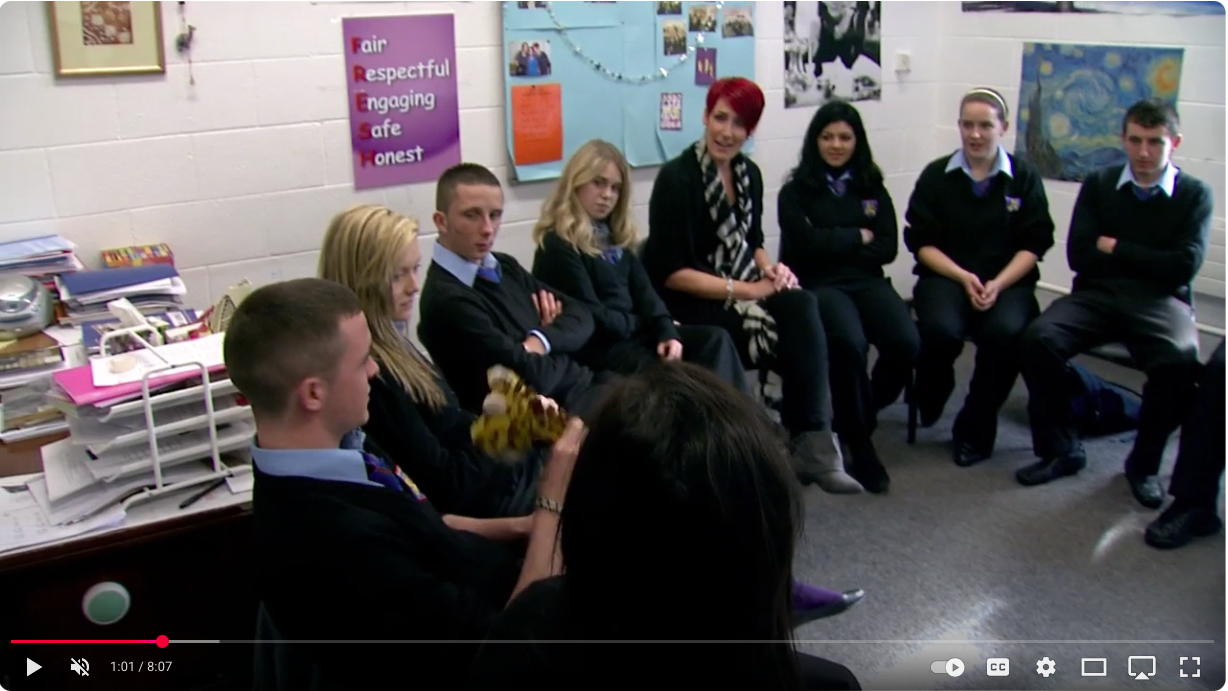
An example of restorative practices in action in a school in Dublin, Ireland. A teacher uses a restorative circle to problem solve an issue with her students.